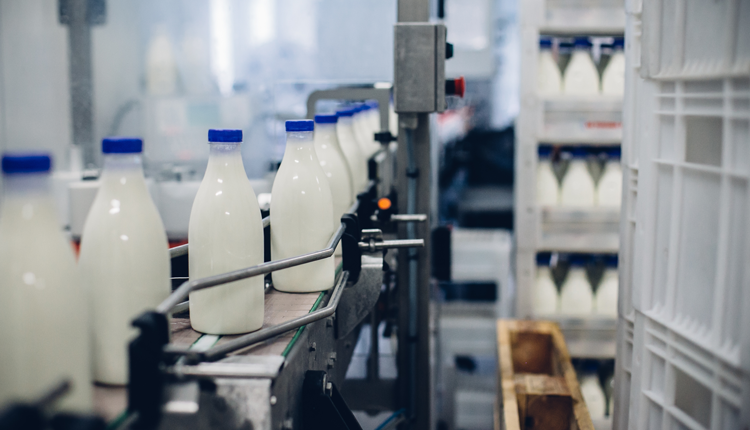Peter Vitaliano is the vice president of economic policy and market research for the National Milk Producers Federation based in Arlington, Va.

Milk production in the United States seems to have entered a period of unknown duration when expansion in excess of demand will be less common than it has been in past years. That is, production will be more restrained and excess production less common than is normally thought to occur in the U.S. dairy industry.
There are several indications in the data that this is happening, but widespread reports that dairy farmers in the United States are currently under more financial stress than usual point in the same direction. This would have several consequences, including a new wave of farm-level consolidation that could be in store for the U.S. dairy industry.
The future is less clear

Between January 2014 and August 2021, the margin using the current DMC formula averaged $8.88 per hundredweight (cwt.), and milk production expanded by an average of 1.56% year-over-year, while milk solids production expanded at the somewhat higher rate of 1.92%. These two dates are chosen because the first roughly marked the start of when the most stimulative margin episode of recent decades could be considered to have begun to affect milk production. This period was the 14 months straight between November 2013 and December 2014 when the margin exceeded $10/cwt. and averaged $12.50/cwt. For several years following this episode, U.S. milk production had a persistent tendency to expand faster than total demand, putting ongoing downward pressure on prices and margins.
The ending date of August 2021 marked the time it became clear that this pattern had changed, when U.S. milk production plunged from a year-over-year growth of 4.63% in May 2021 to negative 1.64% the following January. This unusually abrupt “collapse” of milk production growth provided a strong indication that something fundamental may have changed in terms of how dairy farmers in the country thought about their plans for expansion and, more to the point, were able to finance those plans.
Since September 2021, margins over feed costs have averaged $8.43/cwt. — not much lower than during the previously-considered period of January 2014 to August 2021 — but have generated average year-over-year expansion rates of just 0.06% for milk production and 0.80% for milk solids production. It’s therefore obvious that the production items that must be covered by the margin between the milk price and feed costs have themselves risen in cost, starting with the pandemic and continuing today. The key question is when these higher nonfeed costs will begin to have an effect on milk prices and the price-feed cost margin, similar to the effect over past decades when persistently higher feed costs produced generally higher nominal milk prices.
This has not happened yet. The lowest margins since margin protection became the basic dairy safety net program occurred this year and in 2021, at times when milk production growth was relatively subdued. And 2022’s record-high milk prices generated a much lower DMC margin than 2014’s previous price record would have generated using the same feed-cost formula. The recent annual drop in milk production, from July through November, indicates that dairy farmers continue to operate under considerable financial pressure, and the futures markets are not pointing to a particularly strong recovery. DMC margins have recovered from their extreme lows earlier this year, but the futures are currently indicating that they will average only about $9/cwt. in 2024.
Production on the decline
USDA’s World Agricultural Outlook Board has been progressively lowering its forecasts for U.S. milk production in its monthly reports this year. The December report projected 2023 milk production will exceed 2022’s production by just 0.2%, and 2024’s production will exceed this year by 0.9%. This is consistent with a longer-term trend of slowing annual growth of U.S. milk production, which averaged 2.1% per year from 2005 through 2009, 1.7% from 2010 through 2014, 1.2% from 2015 through 2019, and 1% for the five years from 2018 through 2022.
Among many other consequences of a tighter milk supply and demand balance are higher butter prices relative to prices of the other products that determine milk price. Compared to other products, butter production is closely correlated with overall milk production because its production varies with the availability of cream not needed to produce other dairy products. Nonfat dry milk production is similarly correlated with overall milk production, but its price is driven more by world market conditions.
The futures markets are indicating that about 60% of the total value of producer milk checks in 2023 and 2024 will consist of the butterfat value alone, as they did during 2017 and 2018. Continued growth in the average butterfat composition of producer milk can therefore be expected.
Price predictions are mixed
The milk price outlook itself is somewhat mixed. USDA’s Outlook Board currently predicts the U.S. All-Milk price will average $20.25/cwt. this year, 35 cents per cwt. less than last year’s average price. The dairy futures markets are currently somewhat more optimistic, indicating an average this year around $21.30/cwt.
With these outlooks, there are still open questions about how long the current period of financial pressures will continue to affect U.S. dairy farms. We also wonder how many of them will survive until the markets finally provide some relief and what size dairy farms will experience most of that consolidation.







